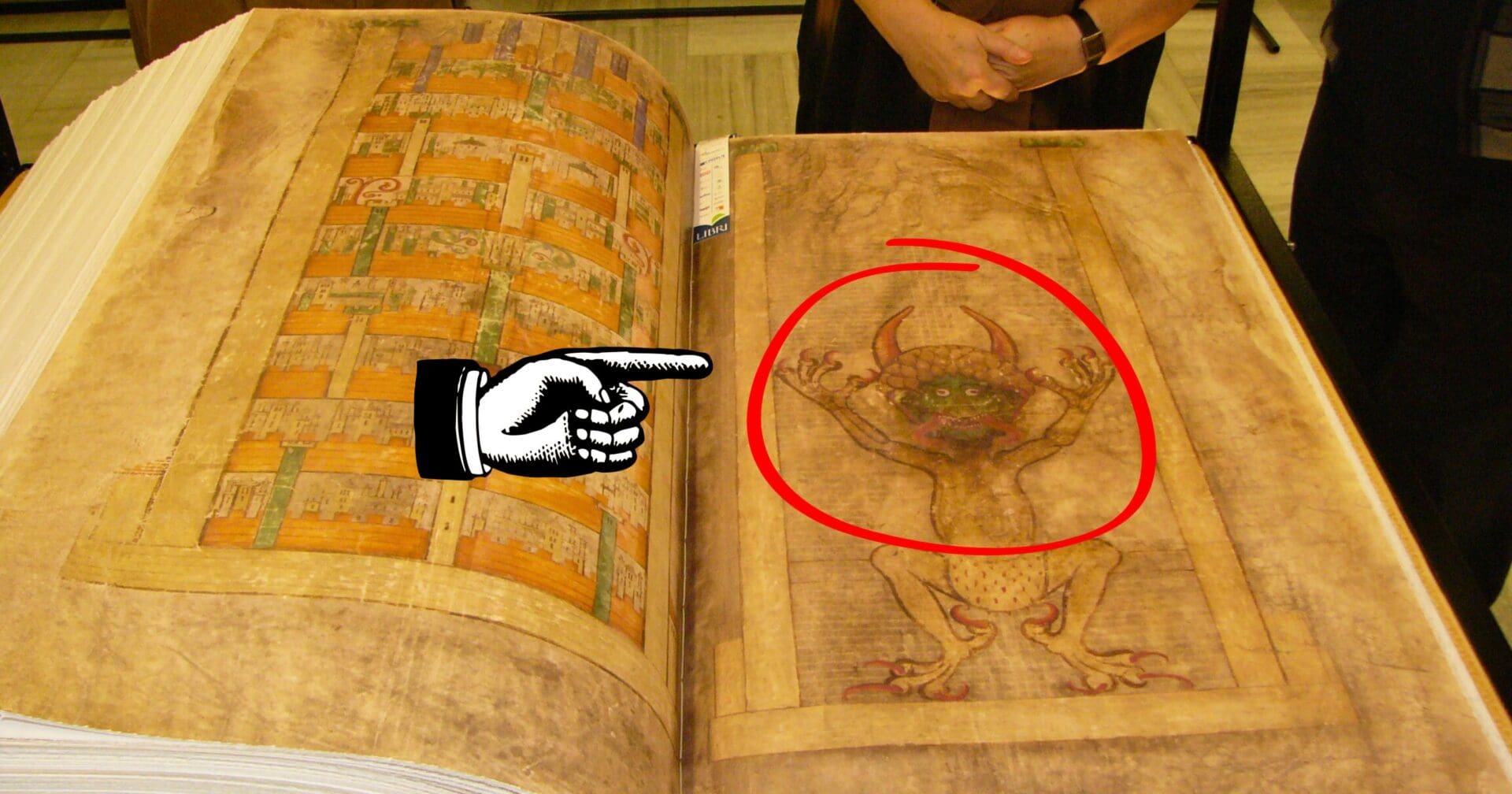Imagine a book so immense that it requires two people to lift it!
This is the Codex Gigas, also known as the “Devil’s Bible.” It’s not just famous for its gargantuan size, but also for its mysterious and somewhat eerie contents. Spanning 36 inches tall, 20 inches wide, and 8.7 inches thick, and weighing a whopping 165 pounds, the Codex Gigas is the largest medieval manuscript in the world.
But why is it called the “Devil’s Bible”?
The answer lies in a unique and striking illustration – a full-page portrait of the devil himself, presented in a dynamic posture, frontally crouching with uplifted arms. This 20-inch tall depiction, clothed in a white loincloth adorned with comma-shaped red dashes, and characterized by large red claws and horns, has fascinated and unnerved viewers for centuries.
The Codex Gigas was meant to be a compendium of knowledge. Created in the 13th century in a Benedictine monastery in Bohemia, it contains the complete Latin Vulgate Bible, along with works of history, medicine, and exorcism. Its pages have providing insights to historians about the medical practices, penitence, mysticism and monastic scholarship of the era.
However, the pious legend behind its creation might be more fascinating as the manuscript itself!
It is said that Herman the Recluse, a thirteenth-century Benedictine monk who was sentenced to be walled up alive for breaking his monastic vows, promised to create this magnificent book in one night to glorify the monastery. Desperate as midnight approached, he asked Lucifer for help in exchange for his soul. The devil completed the manuscript, and in tribute, Herman included the devil’s picture.
Surviving centuries and even a fall from a burning castle in 1697, the journey of the “Devil’s Bible” is as remarkable as its contents. Housed in the National Library of Sweden, it continues to be an object of fascination for pilgrims today.
Photo credit: Michal Maňas via Wikimedia Commons
















